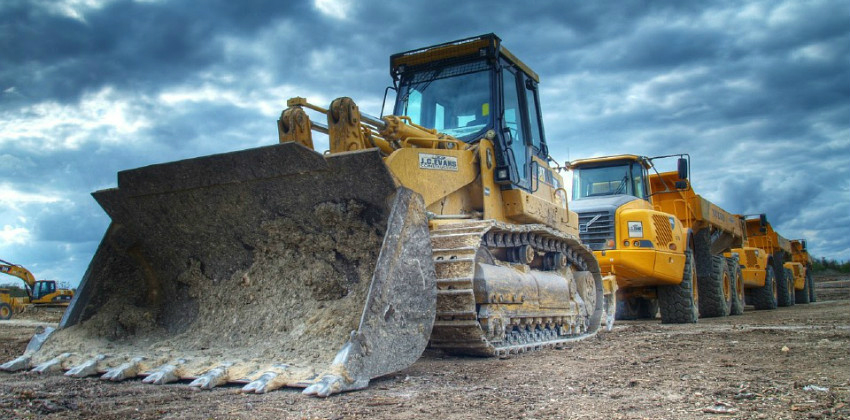Renting Out Vs. Purchasing Construction Tools: Making the Right Selection for Your Job
When starting a building task, among the crucial decisions that predict stakeholders and supervisors deal with is whether to buy or rent construction devices. Both choices have their advantages and disadvantages, making the option an essential one in the job planning procedure. The decision pivots on numerous factors such as cost factors to consider, task period, equipment upkeep, danger, flexibility, and scalability management. Each aspect plays an essential function in figuring out one of the most appropriate path for the project's equipment needs. scissor lift rental. Let's explore these aspects additionally to comprehend exactly how they impact the decision-making process and eventually the success of the project.
Cost Factors To Consider
Renting tools usually needs lower initial settlements compared to acquiring, making it an eye-catching choice for short-term projects or service providers with budget restrictions. In the lengthy run, constantly leasing equipment can collect greater expenses than buying, especially for prolonged jobs.
On the various other hand, acquiring construction equipment involves greater in advance prices but can result in long-lasting cost savings, especially for long-term tasks or constant users. Inevitably, the decision between leasing and acquiring building and construction tools hinges on the project's period, regularity of use, spending plan factors to consider, and long-lasting financial goals.
Job Period

Conversely, for long-term jobs or continuous construction job, purchasing equipment can be the much more economical alternative. Acquiring devices can bring about cost savings over time, particularly if the equipment will be regularly made use of. In addition, having tools provides a sense of control over its accessibility and permits personalization to fit particular job needs.

Equipment Upkeep
Provided the crucial function project duration plays in figuring out the most cost-effective strategy between leasing and purchasing construction tools, the emphasis now shifts in the direction of analyzing the necessary aspect of tools maintenance. Proper upkeep is crucial for making certain the ideal efficiency and longevity of building and construction equipment. Renting equipment often includes the benefit of having actually well-maintained equipment offered by the rental firm. This can minimize the burden of upkeep tasks from the project proprietor or professional, conserving time and effort. On the other hand, having tools calls for a positive approach to upkeep to stop break downs, ensure safety and security, and expand the equipment's lifespan. Normal examinations, servicing, and timely repair work are needed to keep owned and operated tools in leading functioning condition. Consider upkeep costs when determining in between getting and renting, as neglecting maintenance can result in pricey repair services, downtime, and job delays. Inevitably, a well-kept building and construction equipment fleet, whether leased or possessed, is necessary for the successful and efficient conclusion of building and Discover More construction jobs.
Versatility and Scalability
In the realm of building devices monitoring, the element of flexibility and scalability holds substantial value for task efficiency and resource application. Deciding to rent out building devices gives a high degree of adaptability as it permits for the fast change of equipment types and quantities based on the progressing demands of a task.
In addition, scalability, another critical factor, is naturally linked to versatility. Leasing building and construction equipment supplies the advantage of conveniently scaling operations up or down as task needs rise and fall. Professionals can promptly exchange or include devices to match the project's changing requirements without the restrictions of having possessions that may end up being underutilized or obsolete. This ability to scale go to the website resources efficiently can result in expense financial savings and boosted task timelines, making renting a positive alternative for jobs needing flexibility and receptive resource allowance.
Threat Monitoring
Efficient risk administration in building equipment operations is vital to making sure task success and mitigating prospective economic losses. Building tasks inherently involve different threats, such as tools failures, accidents, and job hold-ups, which can significantly affect the project timeline and spending plan. By thoroughly thinking about the dangers connected with owning or leasing building and construction devices, task managers can make educated decisions to lessen these possible hazards.
Renting construction equipment can supply a level of danger mitigation by moving the duty of maintenance and repair services to the rental firm. This can lower the economic worry on the project proprietor in situation of unforeseen tools failings (boom lift rental). Furthermore, renting out gives the adaptability to gain access to specialized devices for particular task phases, decreasing the risk of having underutilized machinery
On the various other hand, possessing building and construction devices supplies a sense of control over its usage and maintenance. However, this additionally means bearing the complete duty for repairs, maintenance costs, and devaluation, raising the monetary dangers related to devices ownership. Cautious threat evaluation and factor to consider of factors such heavy equipment leasing as project duration, equipment utilization, and maintenance demands are essential in establishing one of the most suitable option for efficient risk monitoring in building tasks.
Final Thought
In conclusion, when determining in between buying and renting construction tools, it is vital to consider cost, job duration, devices maintenance, scalability, adaptability, and threat administration. Each element plays a critical function in figuring out one of the most suitable choice for the job available. By thoroughly reviewing these aspects, job managers can make an informed decision that aligns with their budget, timeline, and total project goals.
